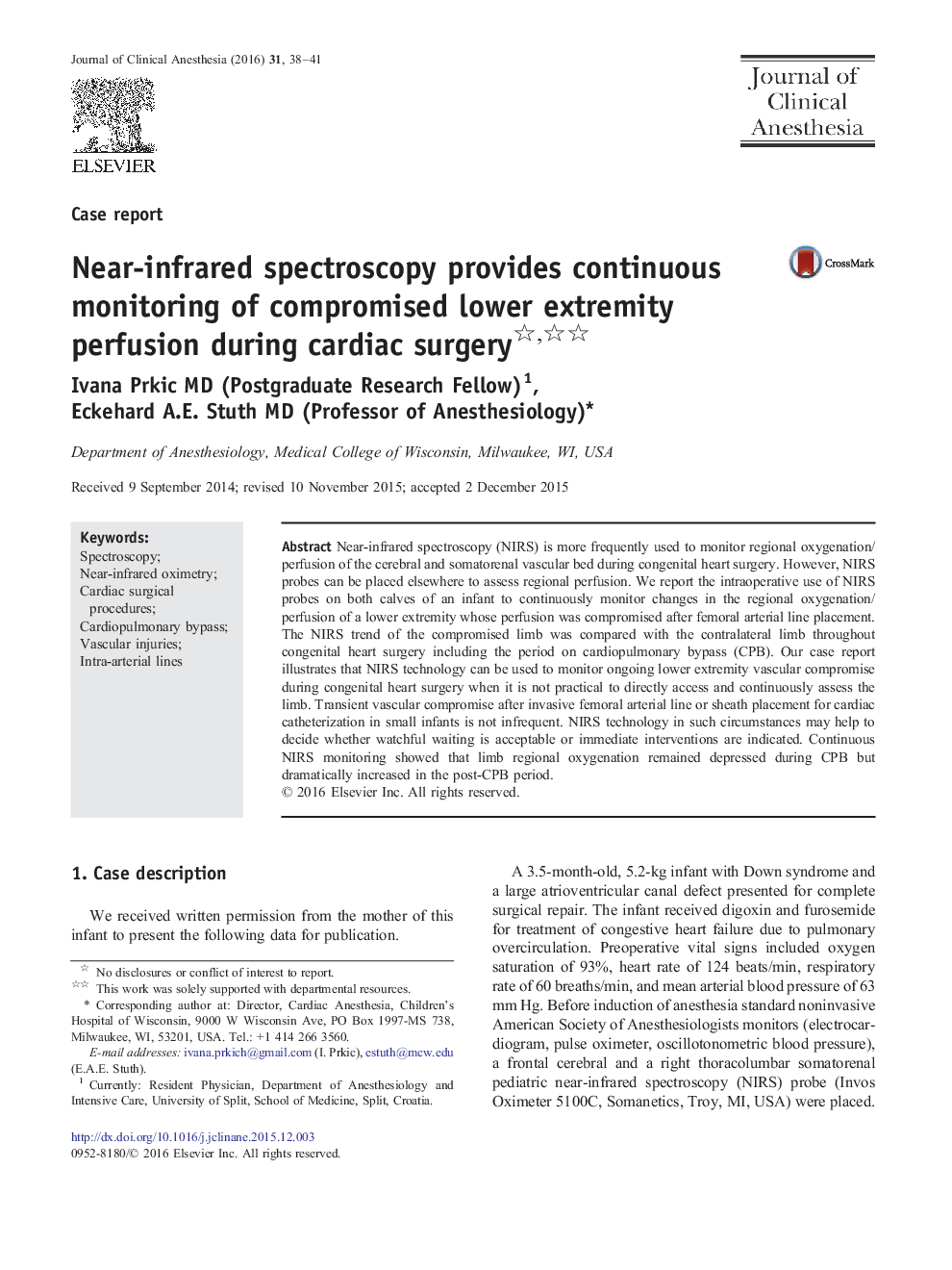| Article ID | Journal | Published Year | Pages | File Type |
|---|---|---|---|---|
| 5884695 | Journal of Clinical Anesthesia | 2016 | 4 Pages |
Abstract
Near-infrared spectroscopy (NIRS) is more frequently used to monitor regional oxygenation/perfusion of the cerebral and somatorenal vascular bed during congenital heart surgery. However, NIRS probes can be placed elsewhere to assess regional perfusion. We report the intraoperative use of NIRS probes on both calves of an infant to continuously monitor changes in the regional oxygenation/perfusion of a lower extremity whose perfusion was compromised after femoral arterial line placement. The NIRS trend of the compromised limb was compared with the contralateral limb throughout congenital heart surgery including the period on cardiopulmonary bypass (CPB). Our case report illustrates that NIRS technology can be used to monitor ongoing lower extremity vascular compromise during congenital heart surgery when it is not practical to directly access and continuously assess the limb. Transient vascular compromise after invasive femoral arterial line or sheath placement for cardiac catheterization in small infants is not infrequent. NIRS technology in such circumstances may help to decide whether watchful waiting is acceptable or immediate interventions are indicated. Continuous NIRS monitoring showed that limb regional oxygenation remained depressed during CPB but dramatically increased in the post-CPB period.
Related Topics
Health Sciences
Medicine and Dentistry
Anesthesiology and Pain Medicine
Authors
Ivana (Postgraduate Research Fellow), Eckehard A.E. (Professor of Anesthesiology),
